Snowdrop - the famous small-bulb perennial, otherwise called galanthus. Botanically, this plant is closely related to the daffodil, but it blooms much earlier. About where and when the snowdrops appear, what varieties they are, and about interesting facts related to these flowers, we will discuss below.
Material Content:
When snowdrops appear
In botany there is the concept of "ephemeroids." He designates a group of perennial plants with an ultrashort vegetation period, which falls on early spring or autumn time. Snowdrops are ephemeroids with early spring vegetation.
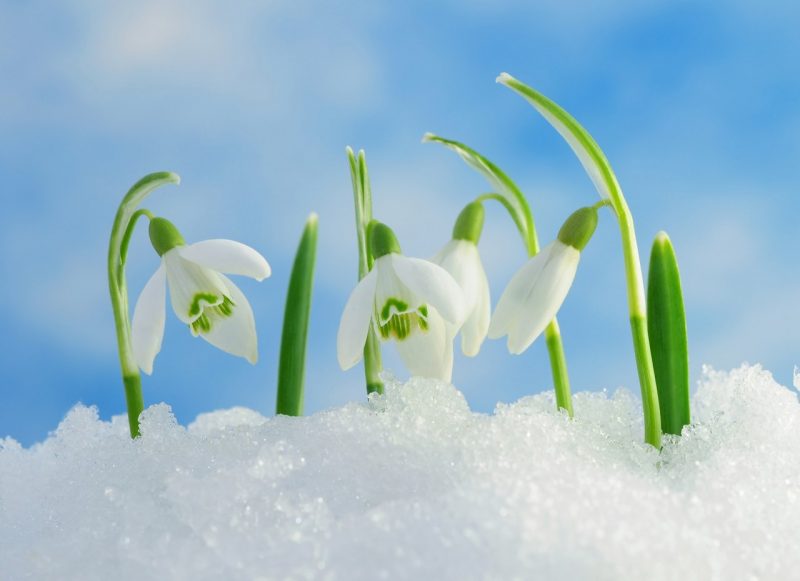
The name tells about the time of the appearance of snowdrops. They begin to vegetate during the snowmelt. At this time, the awakening of the bulbs and the growth of leaves begins. Flowering occurs when the soil is almost completely cleared of snow, and the first insects begin to fly. In central Russia, the flowering of galanthus falls on March. In regions located in more severe climates, it is shifting to April.
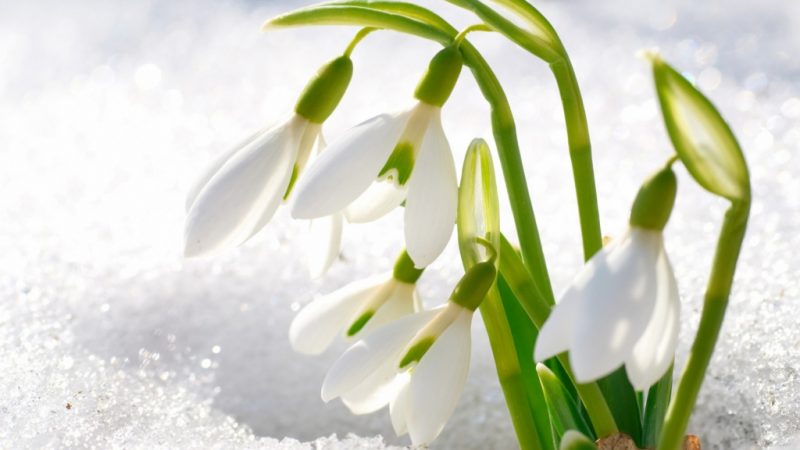
Such a life strategy of snowdrops is due to the fact that these plants tend to complete the vegetation at a time when competition for sunlight is the lowest. Flowering lasts an average of three weeks. After that, the ground organs of galanthus die off, and the bulb begins to accumulate a supply of nutrients.
Where do the first spring flowers grow
For the normal development of bulbs and their successful wintering, galanthus need soil covered with a thick layer of half-ripened plant litter.
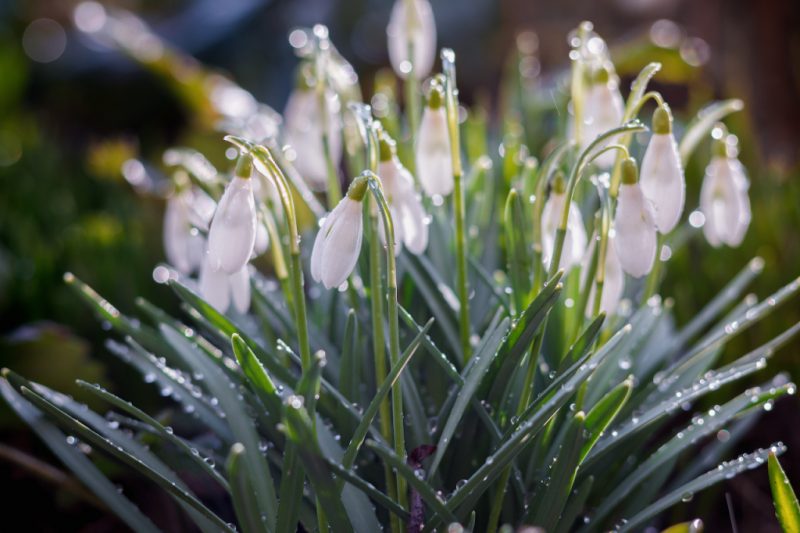
Therefore, most often, snowdrop flowers can be found in the following places:
- in a mixed forest in areas with deciduous trees;
- in a deciduous forest;
- on the borders between a forest and a dry mixed grass meadow;
- on clearings where deciduous trees grew unevenly.
Thus, snowdrops should be sought where there is forest litter.
Description of the types of snowdrops with photos
The distribution area of snowdrops covers a wide area. This is practically the whole of Central and Eastern Europe, including its Russian part, Southern Europe and Asia Minor. Moreover, the genus of galanthus consists of many species. The most famous among them are the following:
Alpine.
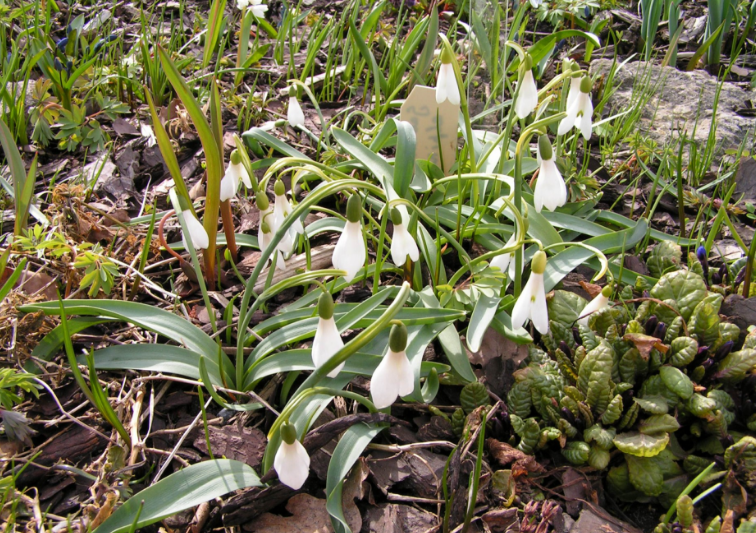
It is an element of mountain biomes located in the alpine zone of the Caucasus Mountains and the Alps. It grows under bushes in alpine meadows, blooming in April.
Narrow-leaved.
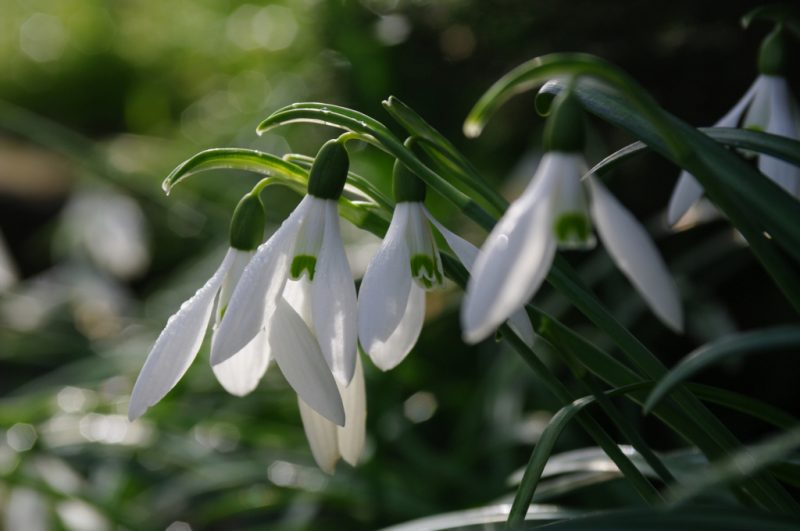
An endemic species that grows exclusively in Kabardino-Balkaria. Prefers the northern slopes of the mountains, grows in shrubbery. The species is listed in the Red Book.
Snow-white.

The most common type. Blooms in early spring in the deciduous forests of Central Europe, in southern Russia (the banks of the Don, the North Caucasus), the Balkans, Greece, Turkey. Depending on the region, it can bloom from January to April. It is actively used in decorative floriculture, being the basis for selection work.
Folded.
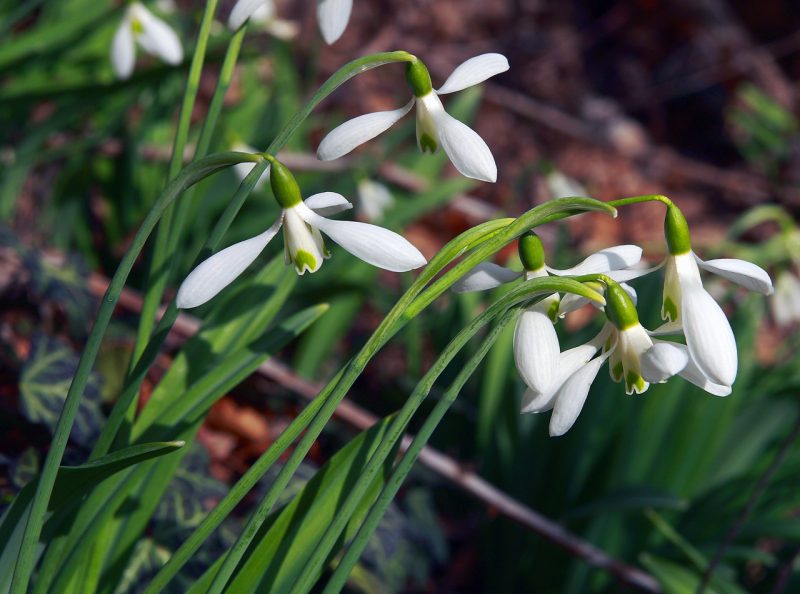
A species with high peduncles that can grow up to 30 cm long. His flowers are also larger than other types of galanthus (diameter up to 4 cm in full dissolution), and have an expressive aroma. It can grow rapidly, which is why it is very popular in culture. In the wild, distributed in the foothills of the Crimea.
Broadleaf (or flatleaf).
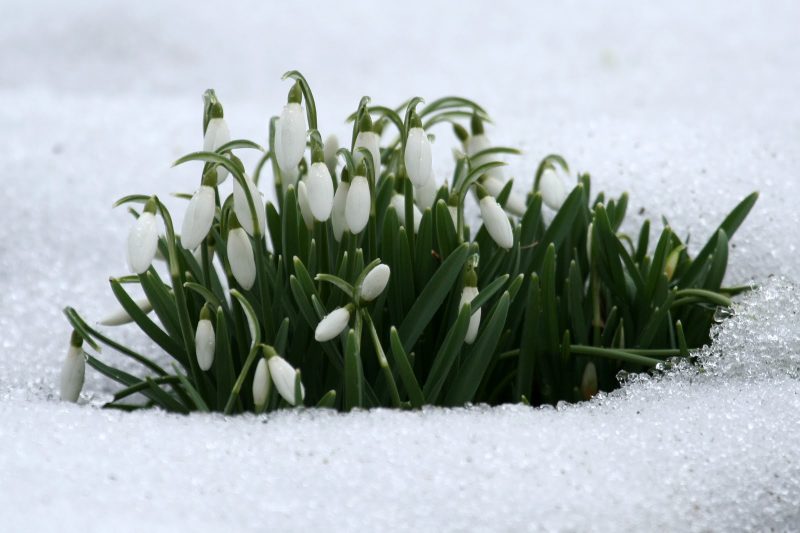
Caucasian endemic species, which has great promise when breeding in northern latitudes. It is characterized by late flowering - at the end of spring. It has beautiful wide leaves with a rounded top.
Snowdrop Elvis.
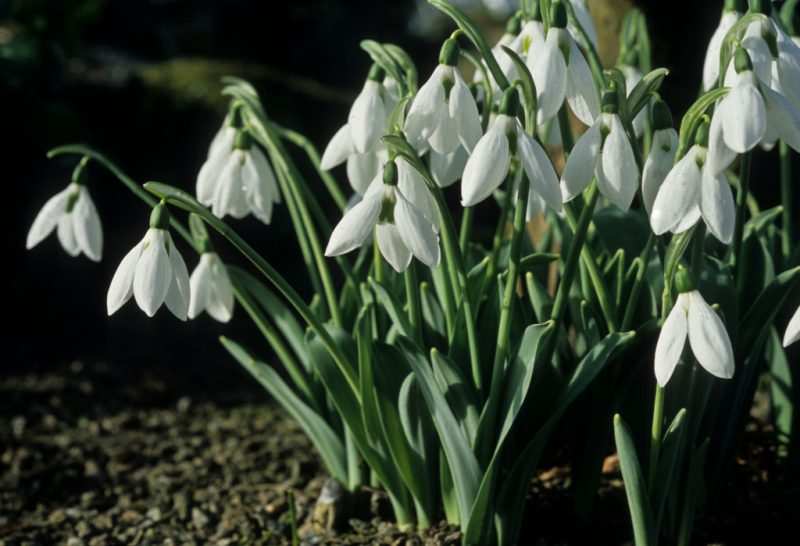
It is found in the wild in southern Europe, the islands of the Aegean, in Turkey. In culture, it is widespread.
Snowdrop of Queen Olga.

A species that blooms at an unusual time - in September or October. Prefers not deciduous, but coniferous litter. It is found in southern Greece.
For decorative floriculture, garden forms and varieties of galanthus - Varlus, Primrose Warburg, Lady Elphinstone, etc. are of most interest.
Myths and legends associated with flowers
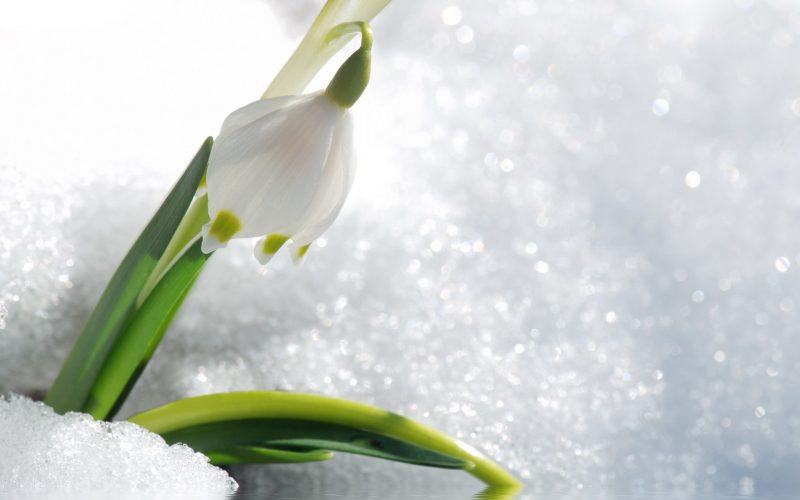
According to an old legend, one day winter decided not to give way to spring. She let a blizzard fall to the ground, covered everything with a heavy snow cover. But the sun judged in fairness, warmed hotter and melted thawed areas, in which fragile first snowdrops appeared - messengers of spring.
According to another legend, snowdrops are the tears of the foremother of Eve. After being expelled from the Garden of Eden to the ground, the first woman cried badly, suffering from the cold. Having taken pity, God decided to give her hope and turned her tears into flowers that made their way out of the snow.
When snowdrop day is celebrated
Snowdrop Day is a holiday that was established in 1984 in the UK. It is celebrated every year on April 19th.
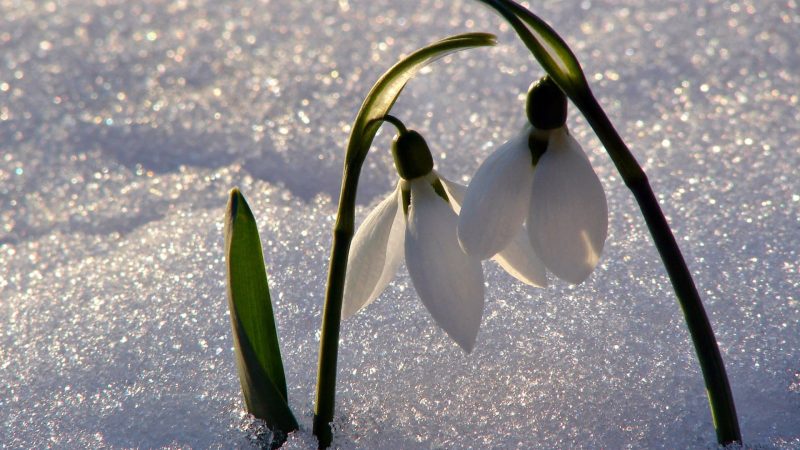
But there is a more ancient European holiday associated with a snowdrop - the Romanian Martisor. It dates back to the ancient Roman New Year and is celebrated on March 1. On this day, it is customary to give each other twisted cords with white and red pompoms. They symbolize a snowdrop flower and a drop of blood - symbols of spring. According to legend, the beautiful Spring pricked on a thorn of thorns when she covered her snowdrop with her hands from cold and frost.
The combination of fragility and internal strength of a snowdrop does not cease to amaze people. But so that this primrose is preserved in nature, do not dig it in the forest. For breeding in flower beds, it is better to purchase bulbs of garden forms of galanthus, adapted for decorative floriculture.












